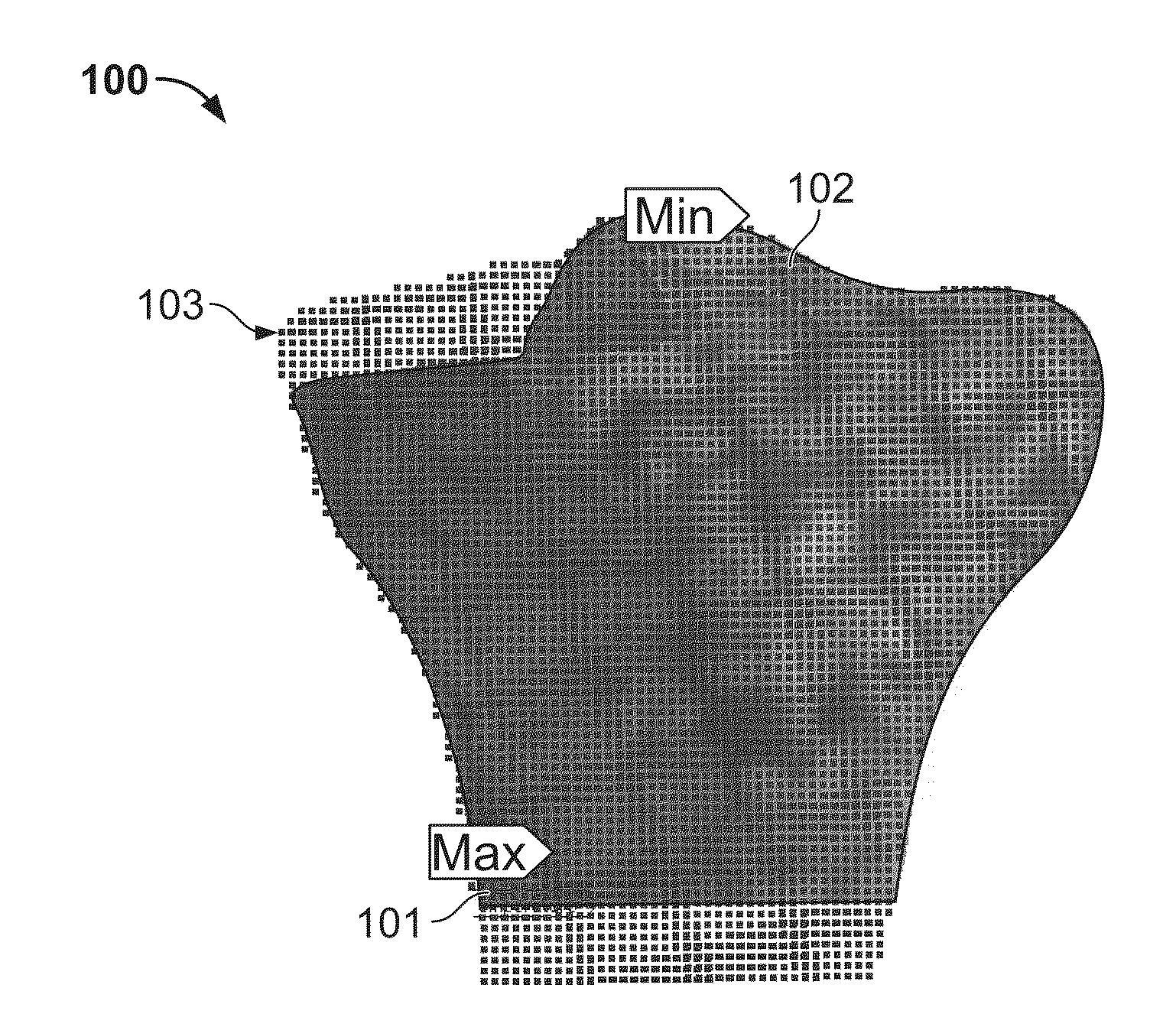Implant design using heterogeneous bone properties and probabilistic tools to determine optimal geometries for fixation features
a technology of heterogeneous bone properties and probabilistic tools, applied in the direction of instruments, prostheses, osteosynthesis devices, etc., can solve the problems of reducing implant stability, achieve the effects of reducing the risk of failure, and reducing the risk of fractur
- Summary
- Abstract
- Description
- Claims
- Application Information
AI Technical Summary
Benefits of technology
Problems solved by technology
Method used
Image
Examples
Embodiment Construction
[0019]As described above, bone properties may vary by location within a patient, which, if not accounted for, may be a potential cause of loss of implant stability. Variations in bone properties, or quality of bone, should therefore be incorporated into the design of implant fixation features in order to, for instance, achieve a reduction in excess micromotion, maintain a desirable range of strain and / or stress transmission, minimize the change in strain the bone experiences with an implant compared to healthy native bone in order to prevent stress shielding, and / or minimize the stress and / or strain experienced by cement or other adhesives that facilitate fixation to extend the life of the implant and / or cement. These endpoints may serve as outputs in simulations, as described in greater detail below. More so, by taking into account variations in bone properties, such as bone density, the fit of the articular implant may be less likely to fail during increased loading scenarios.
[002...
PUM
 Login to View More
Login to View More Abstract
Description
Claims
Application Information
 Login to View More
Login to View More - R&D
- Intellectual Property
- Life Sciences
- Materials
- Tech Scout
- Unparalleled Data Quality
- Higher Quality Content
- 60% Fewer Hallucinations
Browse by: Latest US Patents, China's latest patents, Technical Efficacy Thesaurus, Application Domain, Technology Topic, Popular Technical Reports.
© 2025 PatSnap. All rights reserved.Legal|Privacy policy|Modern Slavery Act Transparency Statement|Sitemap|About US| Contact US: help@patsnap.com



